On my second day in Marrakech, I took a full-day cooking class to learn how to make
Moroccan and Berber food. Myself and 10 other students met our instructor, Lalla Nezha, in
Jemaa el-Fnaa inside the large central Medina in Marrakech. We then set off to the Jewish quarter to learn about some staples in Moroccan cuisine: tea, spices, and bread.
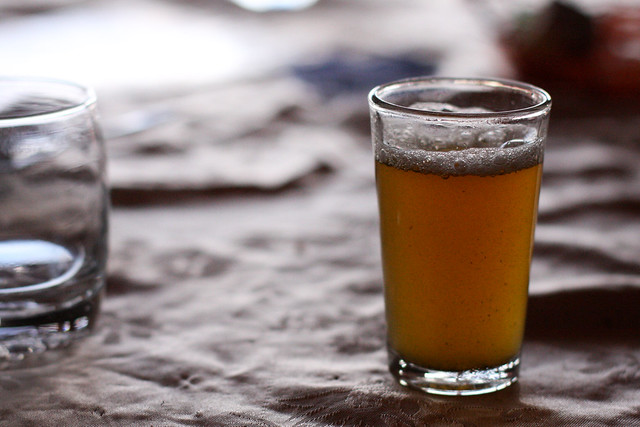 |
| Berber whiskey, a spicy and sweet mulled tea. |
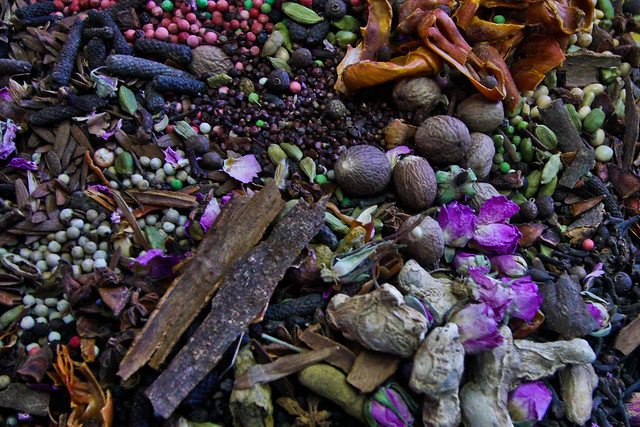 |
| Ras El Hanout, or "best of the shop," is a mix of many ground spices and an essential in any tagine. |
 |
| Flat bread |
We stopped at one of the many shops in a spice
souq and the owner taught us about his wares. We passed around at least a dozen spices and salts, tried each in turn, and then washed our palettes with honey sweetened Berber whiskey, a spiced tea served morning, noon, and night in Morocco. We also tried Argan oil, which is oil made from the kernel of the Argan tree, a plant endemic to Morocco. Argan oil is used extensively for its nutritional, cosmetic, and medicinal properties and is something I heard about repeatedly on my trip because of it unique native abudance (outside of Morocco, the tree is only found in Brazil) and variety of uses.
 |
| Women making Argan oil by hand. |
One of the most interesting things we tried was cinnamon bark. I've licked cinnamon sticks before, and you usually get a faint whisp of cinnamon and then a very bitter ending. This bark naturally tasted sweet! I stashed a few in my pocket for munching later.
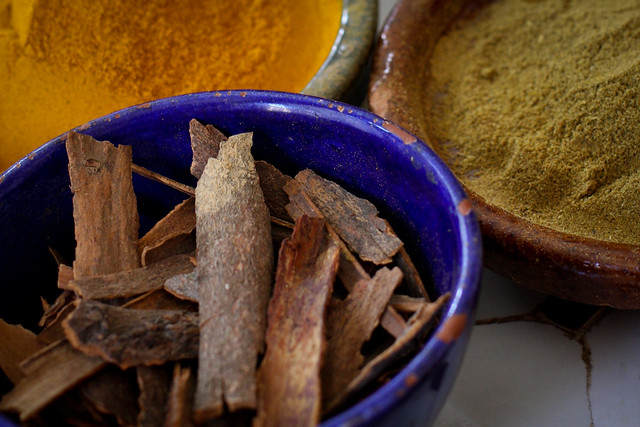 |
| Cinnamon bark. Naturally sweet! |
We also learned a bit about saffron. Moroccans are very proud of their saffron, claiming its the best in the world (next to Iran's). The value of Moroccan saffron per gram is higher than that of gold.
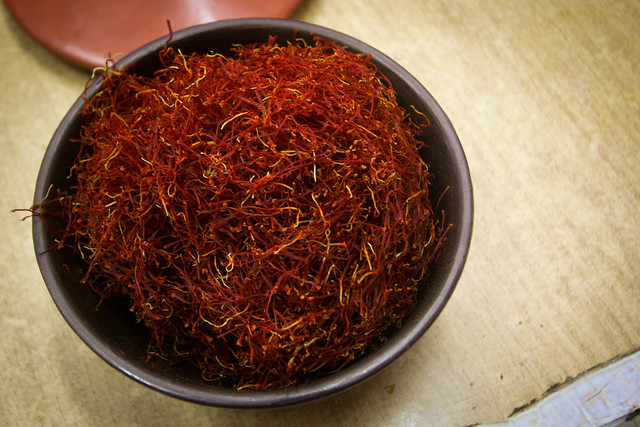 |
| Moroccan saffron, worth more than its weight in gold. |
Then we went to the vegetable stands and butcher. At this point, each student picked out which kind of tagine they were going to make, and then purchased their animal (to be slaughtered) and vegetables.
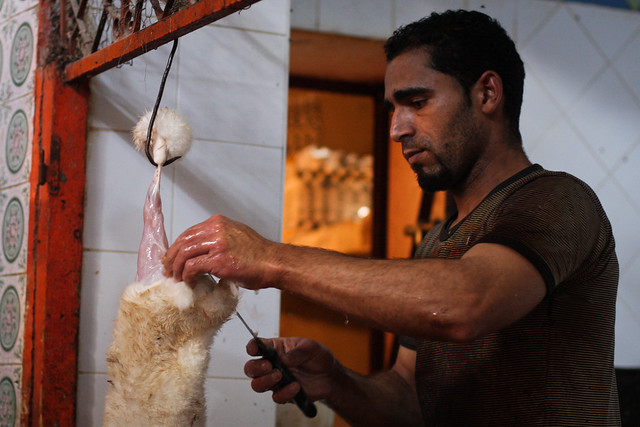 |
| Rabbit meat. |
Finally, we picked up some olives, nuts, and lard from another nearby stand to finish off our ingredient list.
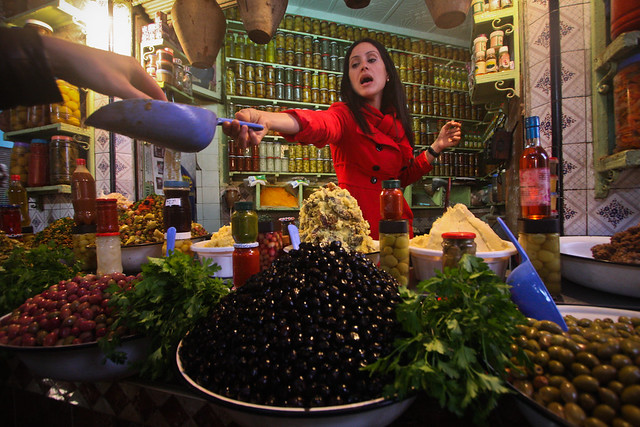 |
| Free tastings! |
Then we drove to Lalla's house in a Berber village about 20 minutes outside of Marrakech. After some appetizers of dates, olives, bread and Argan oil, and tea, we all chopped according to the instruction of Lalla's assistant.
 |
| She was walking around with platters on her head all afternoon. |
Our class decided to loosely organize our dishes so that we'd have a nice variety to eat and share in the end, and I decided to make a fish tagine. Each of the tagines were similar and simple to make if you have the right ingredients. Ultimately, you're just layering your ingredients in a clay tagine (the cooking pot and meal have the same name) and then letting all the vegetables, juices, spices, and meat (optional) make nice slowly over an open fire.
 |
| Fish tagine: pre-cook... |
Toward the end, you can add some olives, and if you're making a sweet tagine, you'd add prunes and toasted sesame seeds. This was the first time I'd had real Moroccan food and really enjoyed the complex sweet and savory flavors in each of the tagines.
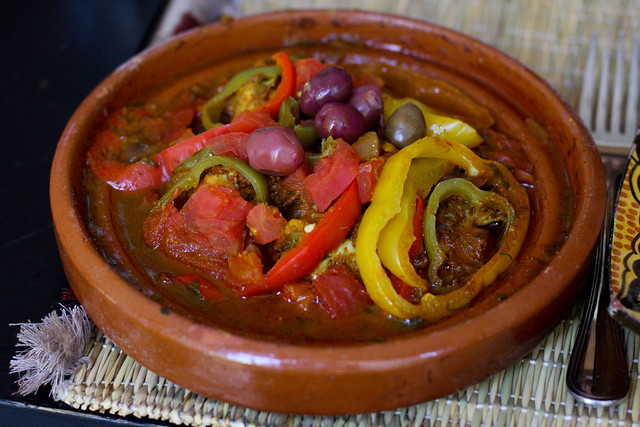 |
| Fish tagine: post-cook, pre-eating! |
Eileen and Terry, experienced Moroccan travelers and eaters, chose meals more ambitious than tagines. Eileen made
Couscous,
the food so nice, they named it twice! I've had instant Couscous before and it is of absolutely no comparison to this. Eileen's Couscous was buttery and fluffy and topped with tender chicken, vegetables, fruits, and nuts. My only disappointment was having so many other tasty options at the table that I couldn't focus my full appetite on the delicious and beautiful Couscous.
 |
| Mount Couscous |
Terry made a
Pastilla, regarded as the national dish or Morocco and typically reserved for weddings or big celebrations. Pastilla is the meal I will most remember from Morocco. It is a pie which combines sweet and salty flavors; crisp layers of
crêpe-like
warka dough (a thinner cousin of
phyllo dough) envelope savory meat slow-cooked in broth and spices alongside a crunchy layer of toasted and ground almonds, cinnamon, and sugar. The finished pie is decorated with a sprinkling of sugar and nuts. Incredibly yummy and unlike any meal I've tried.
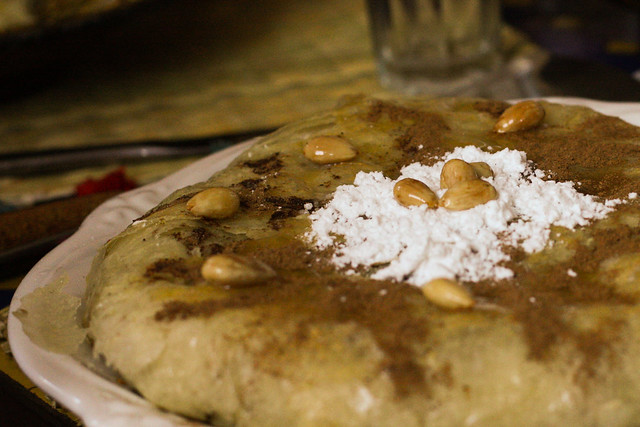 |
| Pastilla |
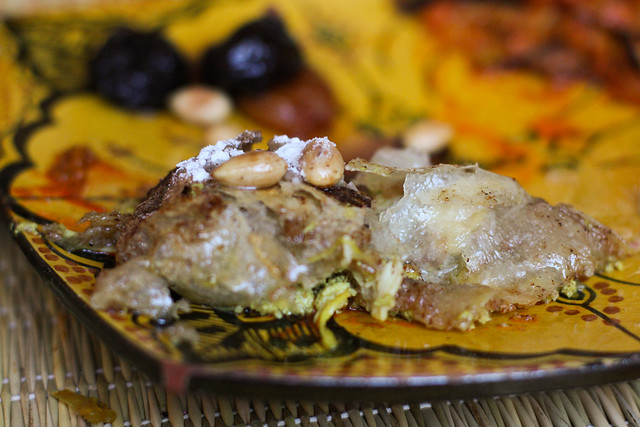 |
| One bite is never enough... |
After all this, I was so full I skipped dinner and breakfast the next day. This cooking class was my favorite experience in Marrakech and I'd highly recommend taking a Moroccan cooking class to anyone that likes eating and learning about new cultures via food. Lots more food porn pictures
here.














5 comments:
Cool pics! :)
Thanks!
Great pictures and well-described commentary.
Can you post information about how you found your cooking class, or a link if available? I'm going to Morocco in early 2012 and would love to take a class--yours looks and sounds right up my alley. Thanks!
Hey pkj, I found this class on tripadvisor: http://www.tripadvisor.fr/ShowUserReviews-g293734-d1389158-r25502691-Les_ateliers_lalla_Fatima-Marrakech.html
Post a Comment